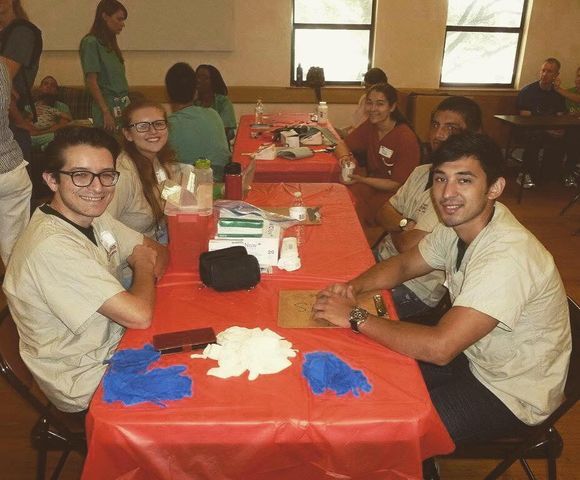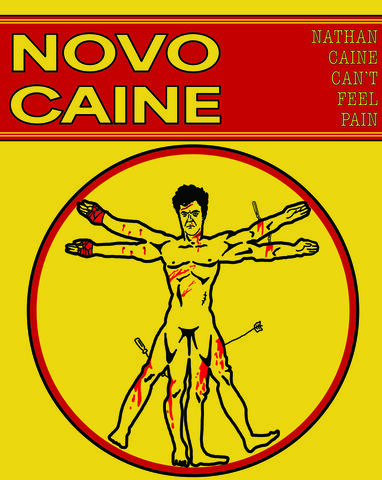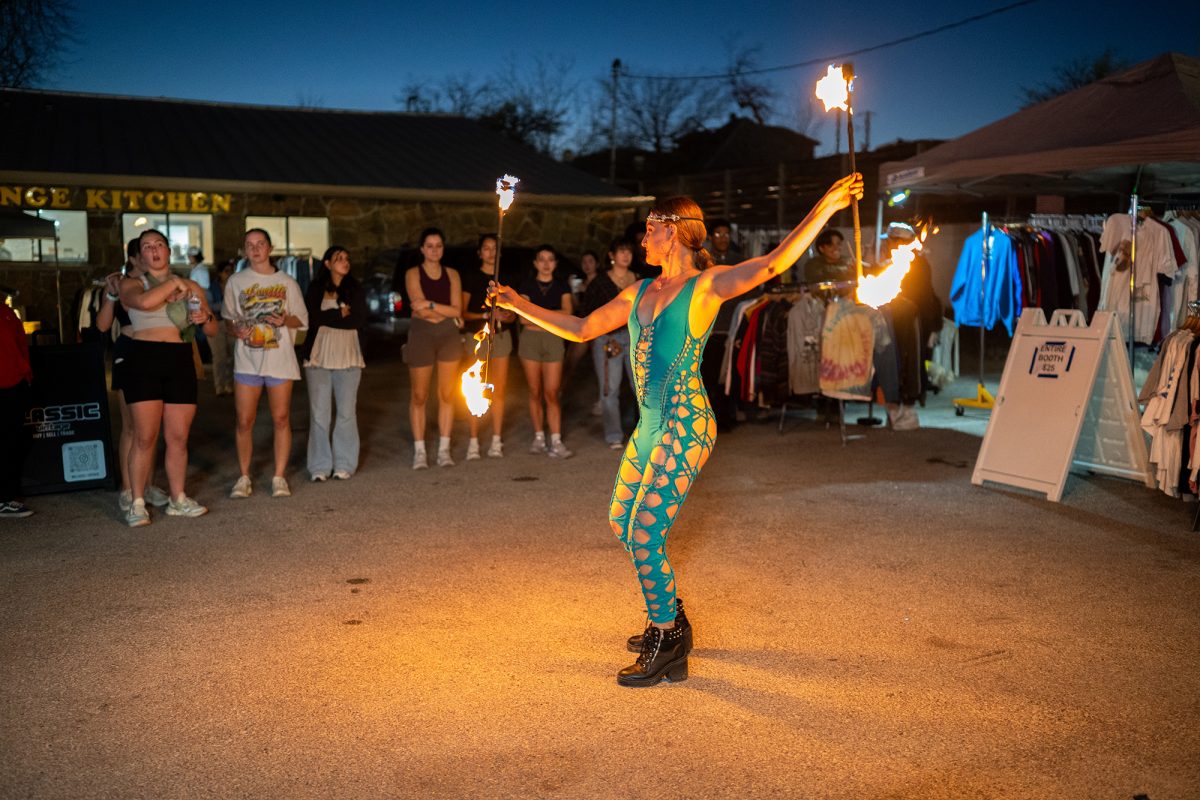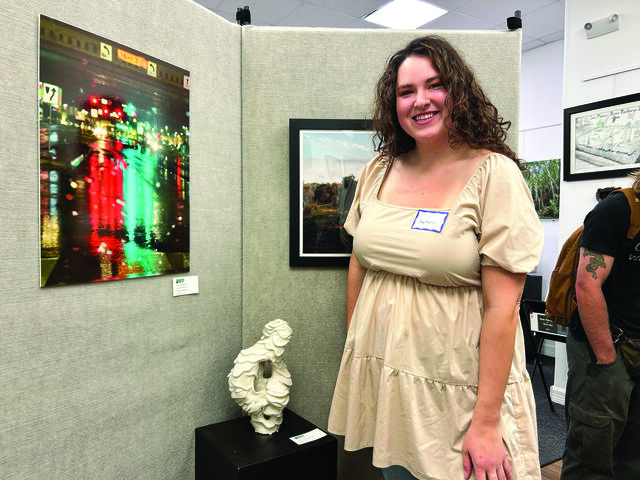Life as a college student is difficult already, but Texas State students are taking more than just their own lives into their hands.
Several Texas State students have completed emergency medical technician training while enrolled full-time. EMTs are first responders that are trained to provide medical care in emergency situations such as car accidents, childbirth and fires.
The role of an EMT involves quick decision making in high-stress situations. To work as an EMT, basic job position training is required as well as EMT-B, where trainees learn to assist patients in emergency situations.
Mason Bartman, microbiology senior, is EMT certified. He recently completed his training while enrolled as a student.
Bartman said it was extremely difficult managing both his training and his school work, but regardless of the stress, achieving certification was worth it.
“When you add the education and training required to become an EMT on top of (being a college student), it becomes difficult to manage time effectively,” Bartman said.
Post-graduation, Bartman said he would like to work as an EMT or in a research lab before continuing his career in medical school with the hopes of becoming a surgeon.
Cody Carroll, biology junior, works as an instructor for Texas State’s EMT training program. The initiative is a part of the Continuing Education Department on campus and is taught at the San Marcos Hays County EMS administration building. Spring registration for the program is closed, but interested students can join the contact list to be notified when fall registration opens. Students interested are encouraged to register early, as the program is limited to 30 students.
The program consists of both lecture and hands-on oriented instruction. Carroll said the curriculum is primarily anatomy and physiology based. Students enrolled in the program are taught basic cardiology, patient assessment, trauma, airway management and the operational aspects of working in an ambulance.
Carroll has been an instructor for six years. Eventually, he wants to create curriculum for an emergency medical degree at Texas State in order to give pre-hospital care providers the same educational attention as other health care professions.
“We’re working at similar levels as nurses and doctors, but aren’t given the same education,” Carroll said. “While that doesn’t affect our practice, it does affect how we’re viewed as health care providers.”
He said the lack of educational requirements for EMTs is limiting on the EMT and paramedic industry. As an educator, Carroll said he wants to expand the EMT knowledge from technician to practitioner.
“A technician-level of understanding is more protocol-based, while a practitioner level is more of understanding the problem, knowing how to solve the problem and why that way is the correct way to solve the problem,” Carroll said.
Carroll said he encourages students who are interested in pursuing a career in medicine to consider gaining practice in EMS.
“EMS is a great way to get a taste of medicine before going to medical school,” Carroll said.
Carroll said he believes his experience in emergency medicine will benefit with his transition to medical school.
“I will go into medical school, which is primarily patient-centered, already knowing the general concepts of patient care,” Carroll said.
Carroll is currently an active paramedic as well as instructor for Texas State’s EMT program. He is presently enrolled in online courses but aspires to attend medical school post-graduation. Carroll said his ultimate goal is to become a medical director for paramedics.
Texas State’s EMT program is in partnership with Hays County EMS. The program includes both clinical laboratory instruction and lecture. The curriculum follows the standards established by the Texas Department of State Health Services, the National Associations of EMS Physicians and the National Registry of EMTs.
Students have gained scholarships through Texas State Medical Explorers, a pre-medical and pre-dental organization, in order to train as EMTs.
Nicole Sawtelle, biology senior, has been involved with Medical Explorers’ community emergency response team, CERT, for four years and is a certified EMT.
During Sawtelle’s EMT training, she participated in hands-on instruction where she ran calls with licensed paramedics and EMTs.
During her EMT training, Sawtelle and her team received a call that a truck had flipped over I-35. When they arrived, she said a crowd of people had helped flip the truck on its side so the driver was not upside down.
“It was really interesting to see how everyone came together,” Sawtelle said. “Even after the first responders had arrived, the people hung around to see if we needed help with anything.”
Sawtelle wishes she could have worked with Hays County EMS more, but due to the 24-hour shifts, it would not have worked with her 8 a.m. classes.
Like most students with an EMT certification, Sawtelle said she plans to work as an EMT post-graduation before transferring to medical school.
Although EMT training may come with its fair share of overwhelming obstacles, students who complete the training have valuable first-hand trauma and patient care experience. By adding another responsibility on top of attending school full-time, students are helping shape the future of medicine, one life at a time.
Categories:
Texas State partners with Hays County EMS
March 5, 2019

Members of Medical Explorers at a refugee clinic in San Antonio hosted by the Christian Medical and Dental Association.
Photo Courtesy of Nicole Sawtelle
0
Donate to The University Star
Your donation will support the student journalists of Texas State University. Your contribution will allow us to purchase equipment and cover our annual website hosting costs.
More to Discover








